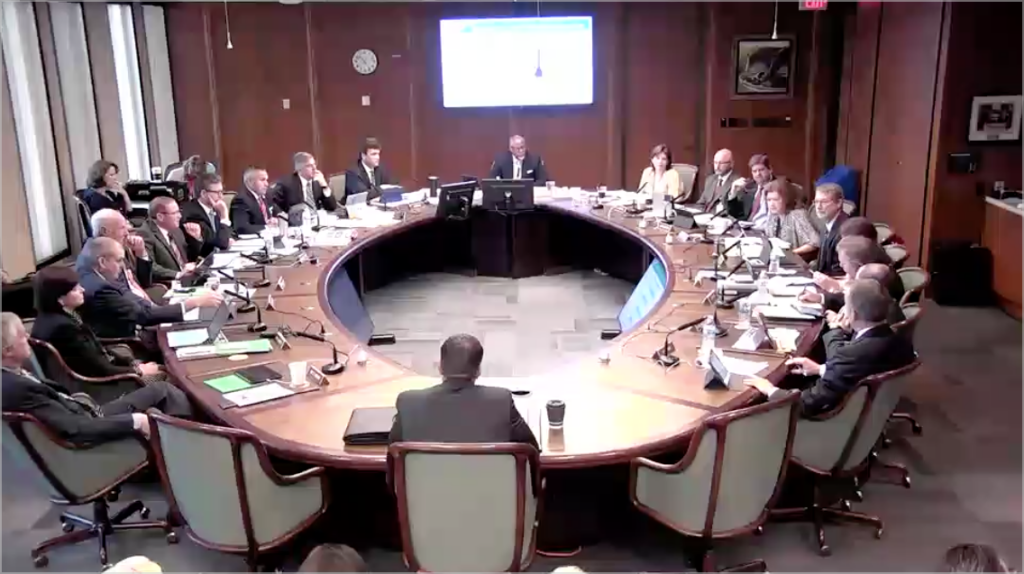All eyes turn to next session as pension and health care programs both need higher contribution levels.
Executive Summary:
- TRS lowers rate of return assumption to 7.25 percent.
- Change to rate of return assumption doesn’t impact current retiree benefits.
- However, it will require the Legislature to provide additional funding for retirees to receive a cost-of living increase.
- Look forward to a special message from Tim Lee on Monday, July 30.
The Teacher Retirement System of Texas (TRS) Board of Trustees voted 5-4 today to lower its investment rate of return assumption to 7.25 percent. Previously, the rate of return assumption was 8 percent. The change creates a potential $1.6 billion biennial cost for the next Texas Legislature.
The decrease in the investment rate of return assumption is highly significant as TRS operates a $147 billion pension fund, the seventh largest in the nation. A change to the investment rate of return assumption impacts potential cost-of-living increases for more than 400,000 retired educators who receive an annuity from TRS, as well as impacts the overall affordability of these promised pension benefits for future TRS retirees.
TRS released this fact sheet about the new rate of return assumption.
The TRS Board of Trustees had a lengthy conversation before taking a vote on the rate of return assumption.
The board discussed taking a stair-step approach to reducing the rate of return assumption. This would involve lowering the rate of return assumption then reevaluating it in a “year or two” to decide whether to lower it again.
TRS Executive Director, Brian Guthrie, cautioned against this approach. He said the stair-step approach “creates more issues with the Legislature,” as it could require TRS to come back multiple times asking for money from the Legislature.
Guthrie was asked by another Trustee, Nanette Sissney, about his prediction of how the Legislature would react to the rate of return assumption dropping to 7.25 percent.
“Every time I’ve gone over to the committee… there’s a general consensus that 8 percent is too high,” Guthrie said. He said that the Legislature “will appreciate” that the lower rate of return assumption is more in line with their views.
The board first voted to adopt a rate of return assumption of 7.35 percent, but that measure didn’t pass. The board passed a rate of return assumption of 7.25 percent on a vote of 5-4.
Cost-of-living increases for TRS retirees are not guaranteed and may only occur if the Texas Legislature approves them. Many TRS retirees have NEVER received a cost-of-living increase. Pension increases can only occur when the fund is able to amortize the cost within a 31-year period.
In order to reach the 31-year funding period, the TRS fund will require a 1.82 percent increase in contributions, which equates to an additional $786 million per year. The fund must be below this 31-year funding period to provide annuity increases.
The average TRS annuity is $2,060 per month. Ninety-five percent of Texas school districts don’t contribute to Social Security. Many TRS members rely on the annuity as the sole source of income.
The Texas Retired Teachers Association (TRTA) is strongly encouraging TRS to pursue the necessary funding from the Texas Legislature to make the fund actuarially sound. TRTA feels that a cost-of-living increase for retirees is vital and necessary, and that a healthy TRS pension fund is an enormous benefit to the state.
TRS accepted testimony from stakeholders during the board meeting.
A common theme among the testimony was a concern about the potential for groups who oppose the TRS defined benefit plan to use the change in the assumed rate of return to advocate for defined contribution plans.
Tim Lee, TRTA’s Executive Director, had a warning for those groups who would angle to remove the defined benefit pension plan.
“We will be ready. You better be as well,” Lee said. He went on to explain that retirees would sound the alarm if any attempt was made to privatize the TRS pension fund.
TRTA is looking to the next legislative session to make a case for higher contributions to the TRS fund.
“We will approach the Legislature with a list of priorities that ask for higher contributions being made to TRS pension fund, a measure that provides a pension increase to TRS retirees, and more money for the TRS-Care program that is expected to have another shortfall of $400-600 million,” Lee said. “The longer we wait to see these issues resolved, the more difficult they will be to achieve in future legislative sessions.”
Additionally, during the meeting, TRTA’s Immediate Past President, Nancy Byler, was appointed to the TRS Retiree Advisory Committee.




